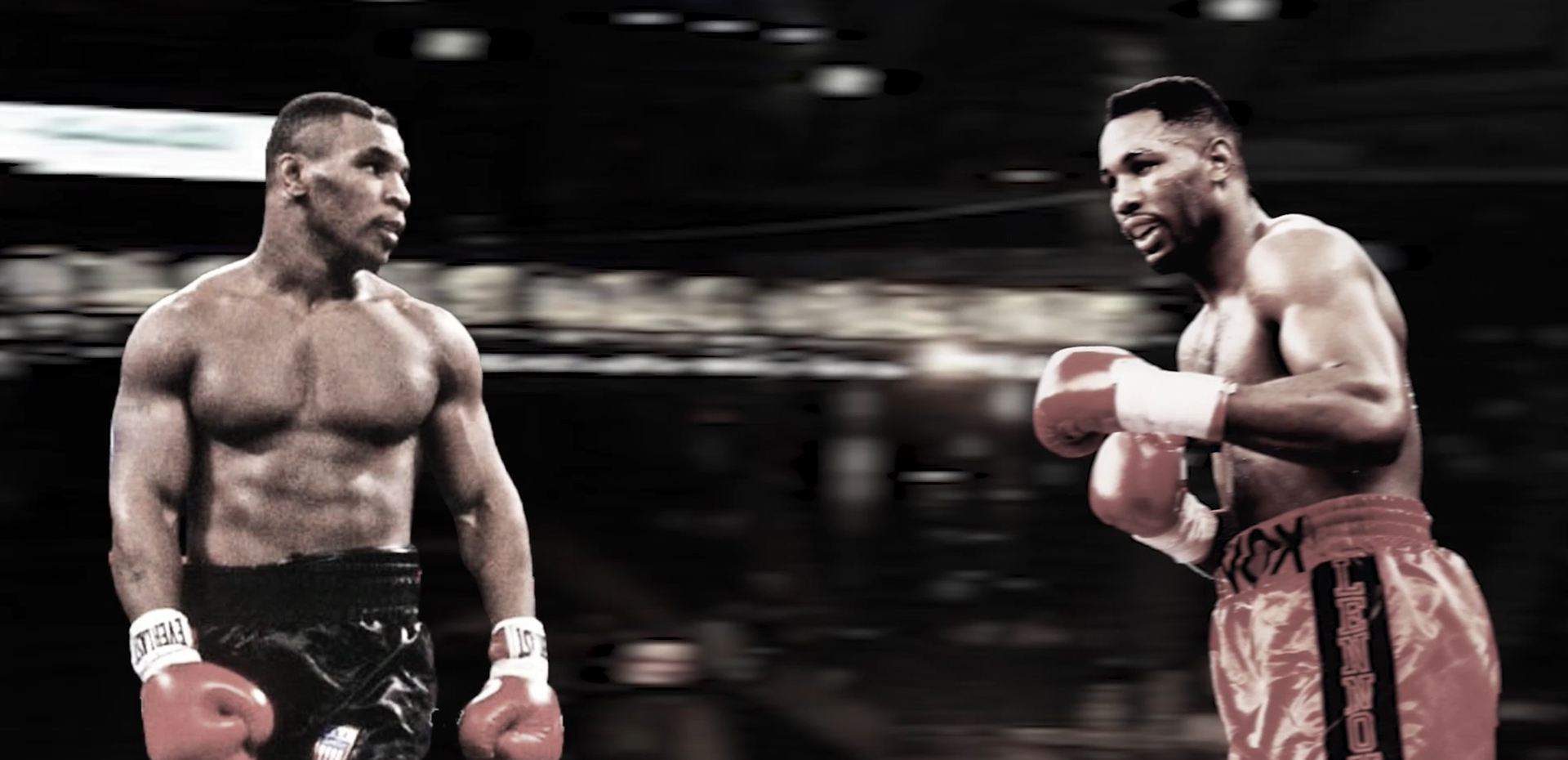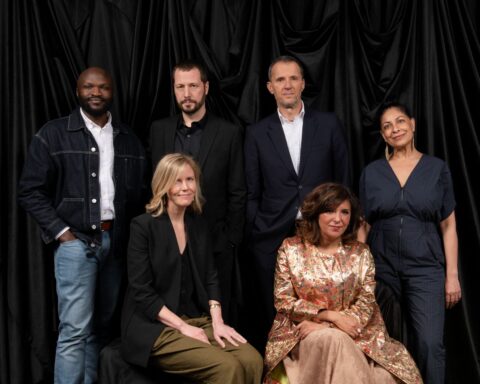Violeta Ayala invites you to step inside Bolivia’s San Sebastian prison – again. While the director first snuck audiences through the doors of the notorious drug prison in her 2017 feature documentary Cocaine Prison, her new virtual reality (VR) project Prison X will show the jail in an entirely new way.
The first chapter of the project, “The Devil and the Sun,” premieres online at Sundance 2021. It immerses the player in the social dynamics of the prison while simultaneously placing them in a world of Incan and Quechan mythology. Animated mythical creatures and characters give the VR experience a nightmarish feeling as players try to safeguard their soul from the Devil’s clutches. Prison X immerses the participant in the terror and mystery of San Sebastian and the intricate web of the drug trade. POV spoke with Ayala about the challenge of creating her first VR project, incorporating her perspective as a Bolivian Quechua artist, and her thoughts on the future and potential of non-fiction VR.Violeta Ayala invites you to step inside Bolivia’s San Sebastian prison – again. While the director first snuck audiences through the doors of the notorious drug prison in her 2017 feature documentary Cocaine Prison, her new virtual reality (VR) project Prison X will show the jail in an entirely new way.
The first chapter of the project, “The Devil and the Sun,” premieres online at Sundance 2021. It immerses the player in the social dynamics of the prison while simultaneously placing them in a world of Incan and Quechan mythology. Animated mythical creatures and characters give the VR experience a nightmarish feeling as players try to safeguard their soul from the Devil’s clutches. Prison X immerses the participant in the terror and mystery of San Sebastian and the intricate web of the drug trade. POV spoke with Ayala about the challenge of creating her first VR project, incorporating her perspective as a Bolivian Quechua artist, and her thoughts on the future and potential of non-fiction VR.
VA: Violeta Ayala
POV: Madeline Lines
This interview has been edited for brevity and clarity.
POV: How did this project come to be – have you always wanted to make a virtual reality experience?
VA: Not really, but the first time I experienced the VR software and began to draw and to create, that’s when I wanted to seize that moment. I really wanted people to experience a different reality, a different mythology, and create my own characters based on my own perception of the world. I didn’t want to make something like Disney. I wanted to tell stories to represent what was my reality growing up and living in Bolivia, and base it in Inca and Quechua mythology. But it wasn’t my idea until I had the tools to create it. The moment I realized what you could create in Tilt Brush [a 3D painting VR application], everything changed. You can draw whatever you want to draw in 3D, it’s very simple. You put on the headset and you can create worlds, you can animate worlds. [Shortly after this conversation, Google announced it was ending development with Tilt Brush and making it open source.]
POV: Could you tell me a little bit about the plot of Prison X, the different characters, and how it all came together for you?
VA: Everything exists in a mixture between Quechua mythology and reality. It’s reality in the sense that we have the plaza, the prison, the mountains – everything we have in Bolivia – but everything is handmade and drawn in virtual reality. It starts with a film theatre director, the Jaguaress, in a set. She asks you to step in and perform because there is an actor missing. You physically have to go and put a mask on in the mirror. You see yourself transforming into the character. Then she leaves you alone and you have to navigate this world. It’s both interactive and immersive, which is something very difficult to do. Because if it’s just immersive you just see it as a 3D story, but if it’s interactive, you play it.
Once you get to the doors of the prison, everything freezes and goes black and white. You sign your name like you do in real life. It becomes immersive, and you meet the characters, like Juki, the prison janitor. You meet Dan Magpie, who is an Australian journalist who thinks he’s doing good and knows the story better than anybody. And then there’s an old lady, an old cholita called Nuna. She’s 157 but she lies and says she’s only 90. You explore the prison, meet the characters, and there will be stories in all of the rooms to explore in whatever order you like. Regardless of where you go, you’re going to come up with your own version of the story.
If you ever go to the prison or watch my film Cocaine Prison, you’ll see it resembles the prison. It resembles the plaza, and some of the characters are based on real people. Magpie is based on my own partner, and I am the Jaguaress. It has multiple levels of deepness and it’s very meaningful, but it’s also quite funny. People laugh when they get pushed out of their comfort zone.
POV: It sounds very complex and multilayered. Which artists did you have in mind to kind of create this world that seems like it a lot of work went into it?
VA: It’s a mixture between theatre, film, and animation. We were starting a new language in virtual reality. I couldn’t work with regular people who work in film, because they approach it [linearly] like A, B, C. I found a Bolivian Indigenous artist in Berlin [Maria Corvera Vargas] who has her own fashion brand and is a pioneer in ethical clothing and design. I read about her in a magazine, and I went and found her and she said, “I’ve never done this,” but she came in and she was amazing. It was important that her politics and ethical ideas were aligned with mine. I read about another artist [Rilda Paco] in the paper at the center of a controversy. When I saw the things she was saying and doing, I thought she’d be perfect, so I called her to come and draw [as the 3D illustrator]. When she arrived, she had no idea it was virtual reality and didn’t know if she could do it – but she did it. My brother [Rory Elias] is a live sound engineer who travels with big bands and tours all over the world. He joined in and pushed me to go to that extra level to make the audio surround and move with the player.
We created a lab in Sydney, and I puppeteered a lot of the characters. We got artists and musicians and voices from all sorts of people to form the characters. For the soundtrack, I had gone to an exhibition and met a DJ I really liked. We’d talked about how our moms were both from the same city, Cochabamba. The very first thing he made for the project was amazing, he changed everything. I didn’t have to tell him about my world because he already understood everything. He’d never composed before that. I worked with a lot of first-timers, and I think the work shows what amazing talent they have. I’m proud that we achieved our goal, which was to create this experience from a real insider’s point of view.
POV: What were some of the challenges of creating a VR piece for the first time, and as first-timers?
VA: It was hard because not many women are doing this. I had to learn so much about VR technology. Even these rigging systems that you need to use for animation, they are all modeled after white men. You have to take your animation and try to put it in the body of a woman, change things around a lot, and you realize how biased it is. We were all intimidated by the technology of VR. We need women to develop all of these programs if we don’t want to keep having this massive gap in 100 years. VR was being created in a very narrow way then because it was made by middle-upper class white men that were monolingual in English. I also think it’s very important to be democratizing the making of animation and VR. If we independent filmmakers and creators don’t get involved and adapt, and we get scared by the technology, the gap is going to grow bigger.
I am, by tradition, a documentary filmmaker. At the moment, I have close to a rough cut of a new feature documentary – but VR fascinates me and I will continue to do it. I also want to challenge a lot of creators to come and join VR, especially women. It is essential that we do get involved now so that we are helping to set a visual language and set the technology so we can face a better future.
POV: What does a VR project allow you to do that documentary does not, and vice versa?
VA: I will never have the creators that I have working in the VR project working on a documentary with me. They will think it is too boring, too traditional. Now I’m going to push them, of course, and they might do it, but it will never grab their attention in the way VR did. They will never be interested in working in a traditional documentary because it is not challenging enough for them. It gets a lot younger people falling back in love with film. Rather than thinking that they want to be YouTubers or Tik Tokers, they want to make films in this way. The technology is also getting better and better, and it’s getting cheaper. The pandemic has also accelerated a [demand for] headset technology with people being at home.
POV: How will the rollout of this kind of experience happen during COVID? How will people experience it and how will it get out into the world?
VA: It’s funny because Sundance will be more democratic than ever this year. Before now, you had to be at Sundance in the mountains. Then you had to sign up and wait in a massive line to be able to access a headset to watch it. However, this time everyone who has a headset can buy a ticket and enjoy any of it at home, so it is reaching a bigger audience than ever. The Quest 2 was released in October and that’s the consumer one. It is changing everything for VR because of the price and the accessibility.
POV: What was the most rewarding part of being able to tell this story in the VR format?
VA: I wanted to be able to capture a story that I couldn’t with a camera, because everyone knows that the devil exists, but no one sees it. To be able to play mythical characters, to go back to my childhood, and to create a world where that exists was incredible. With my daughter, I’m very serious about having no screens. She doesn’t watch TV. She lives and has to draw from her imagination. I never saw a TV until I was nine years old, and I’m making what I’m making because that gave me the capacity to look and see around. My daughter did try Prison X. She went inside and was seeing the characters and she said, “Mama, I can’t believe it! Wow, my mom can make much better than Frozen!” For me, the most rewarding thing is that all Bolivian kids have our own mythology recorded in this project, and we’re starting to tell our own stories.
Prison X premieres at the 2021 Sundance Film Festival.
Sundance 2021 runs from Thursday, Jan 28 to Wednesday, February 3.













